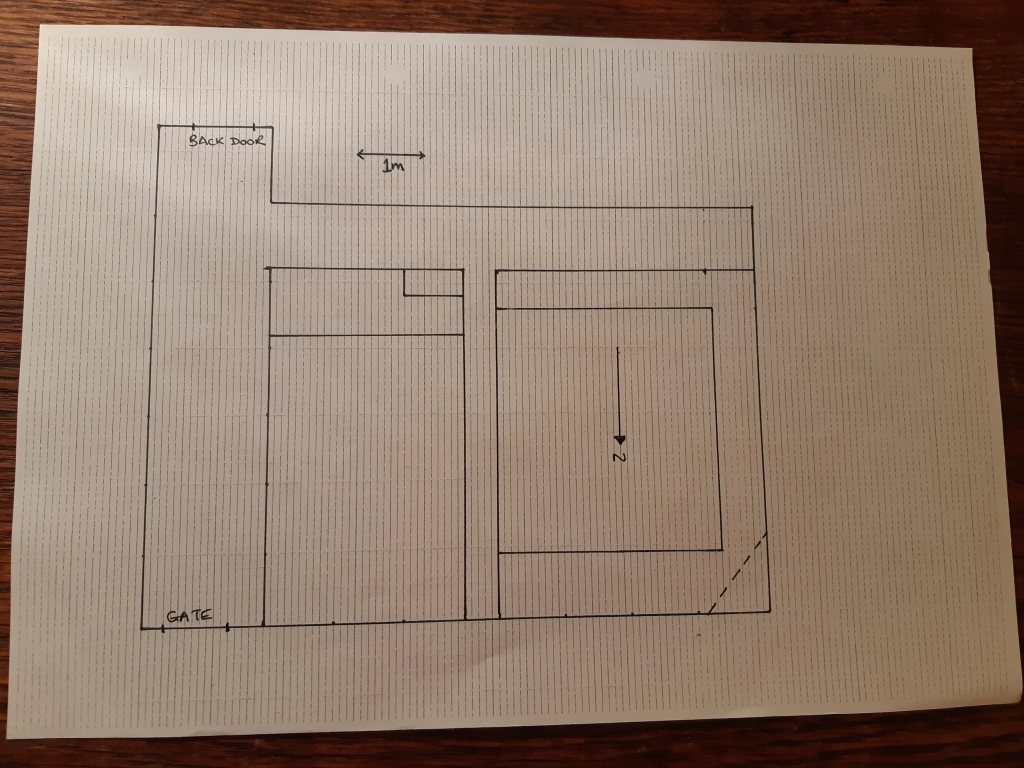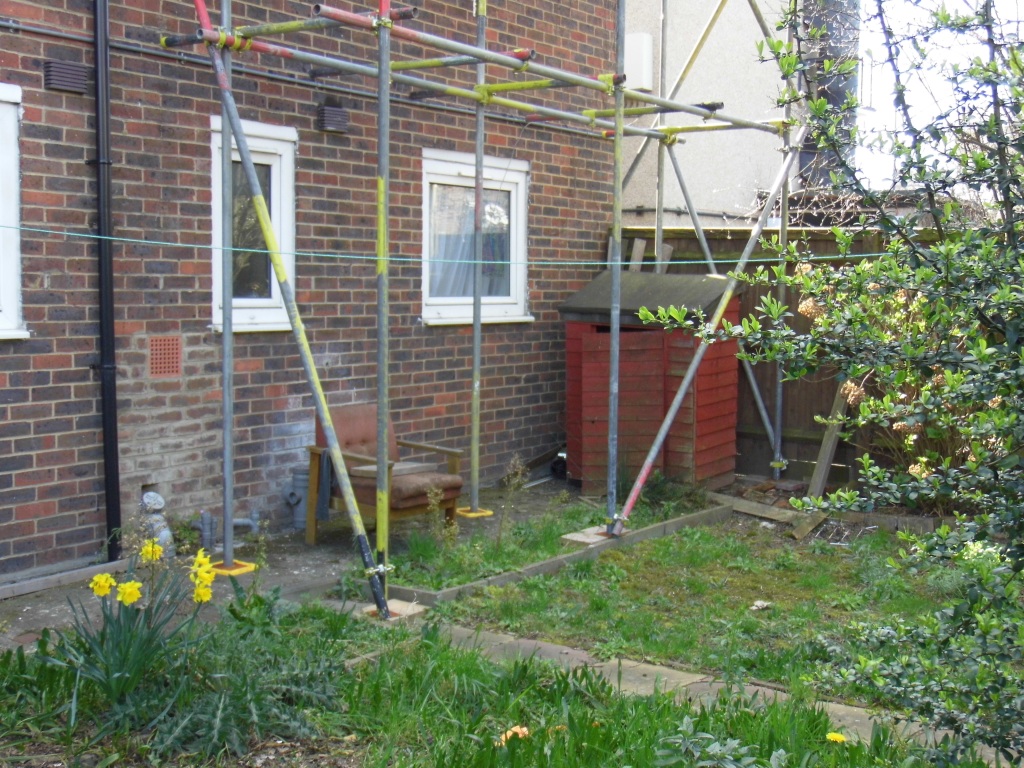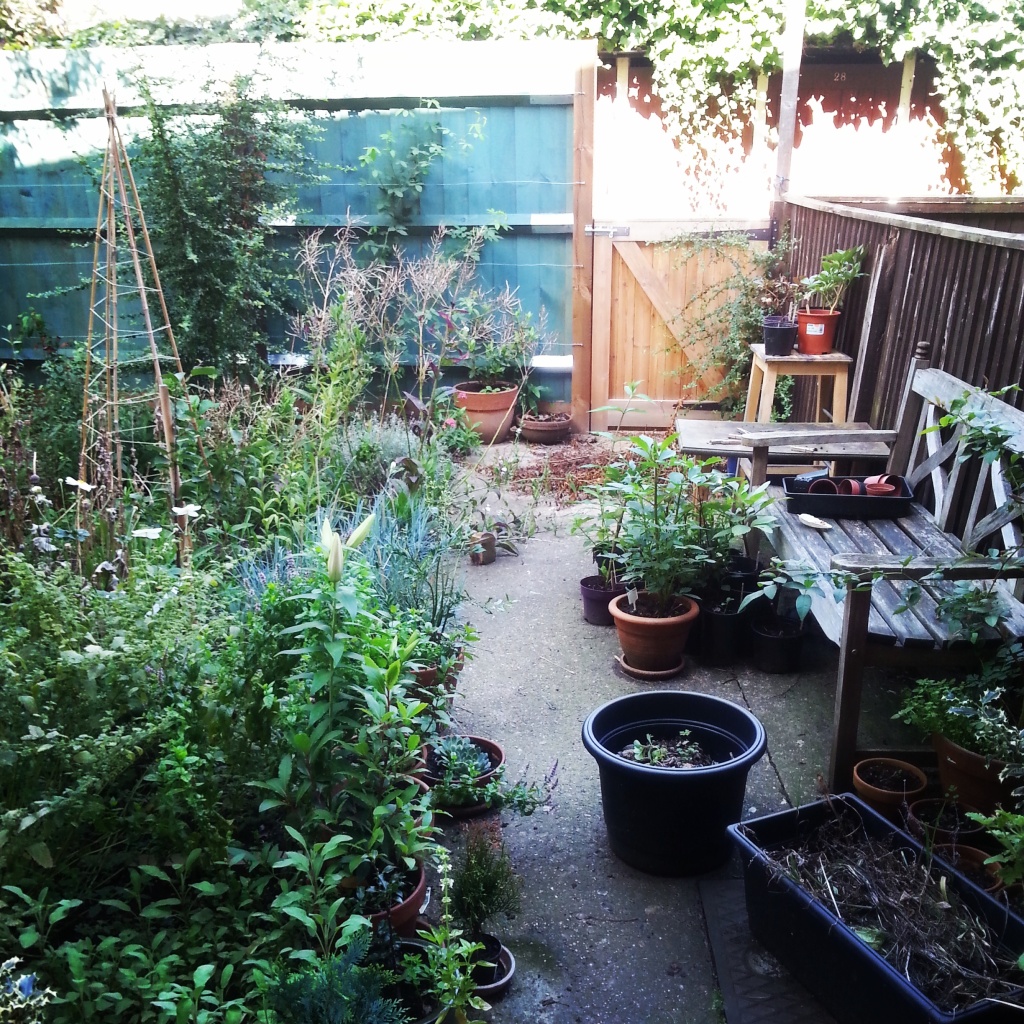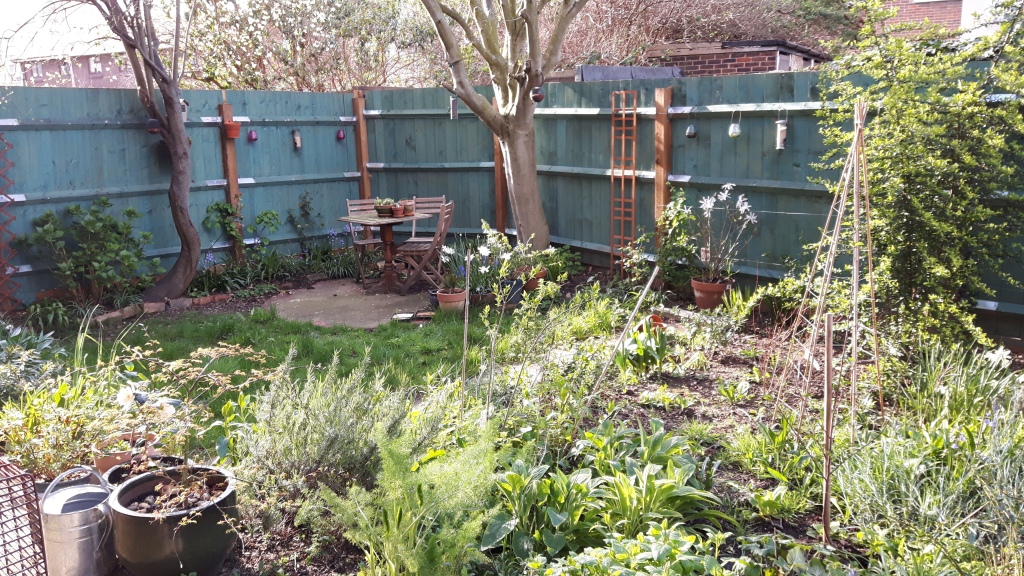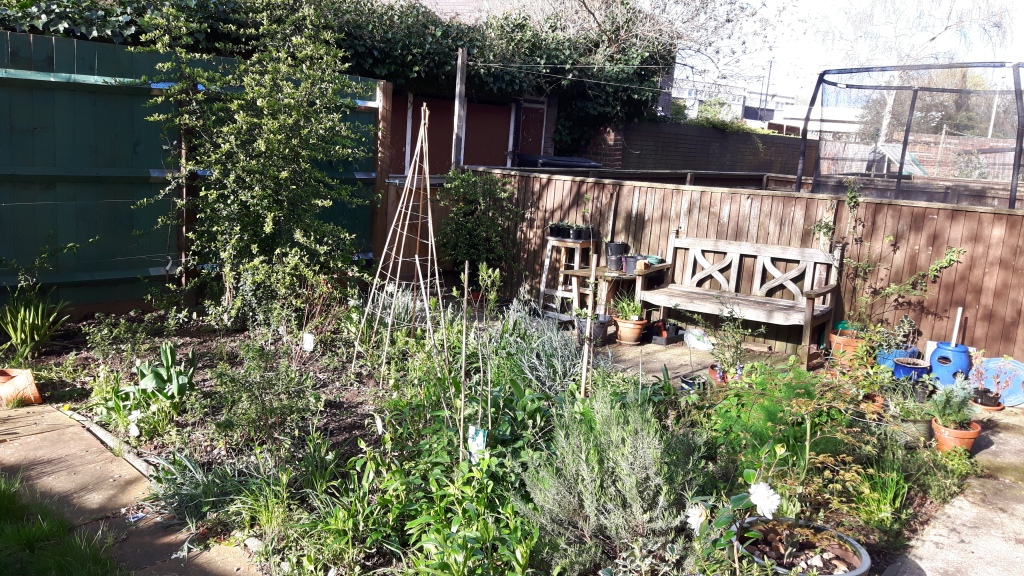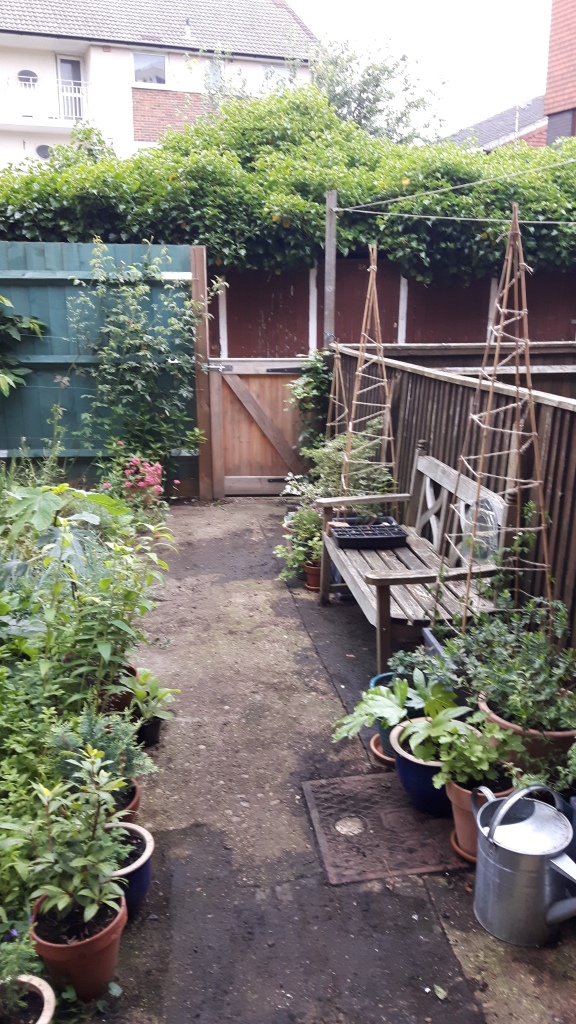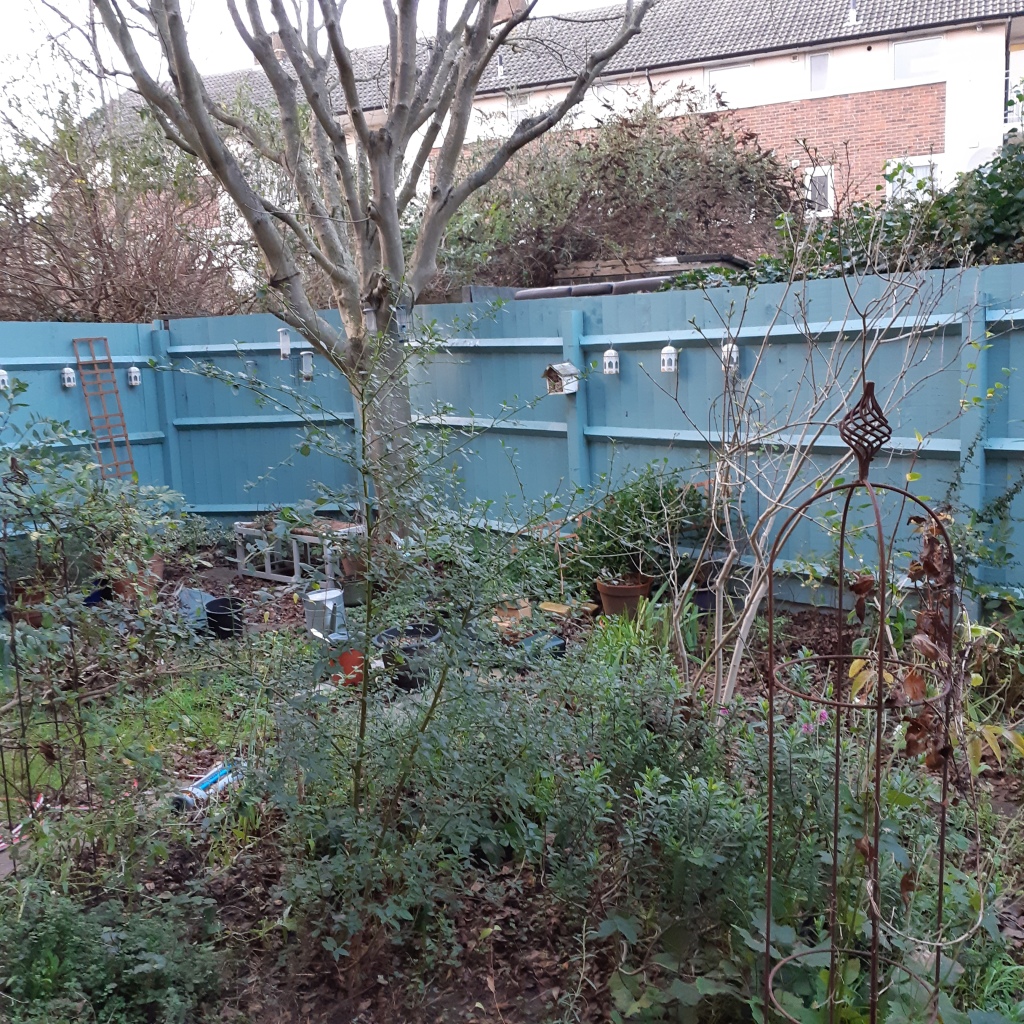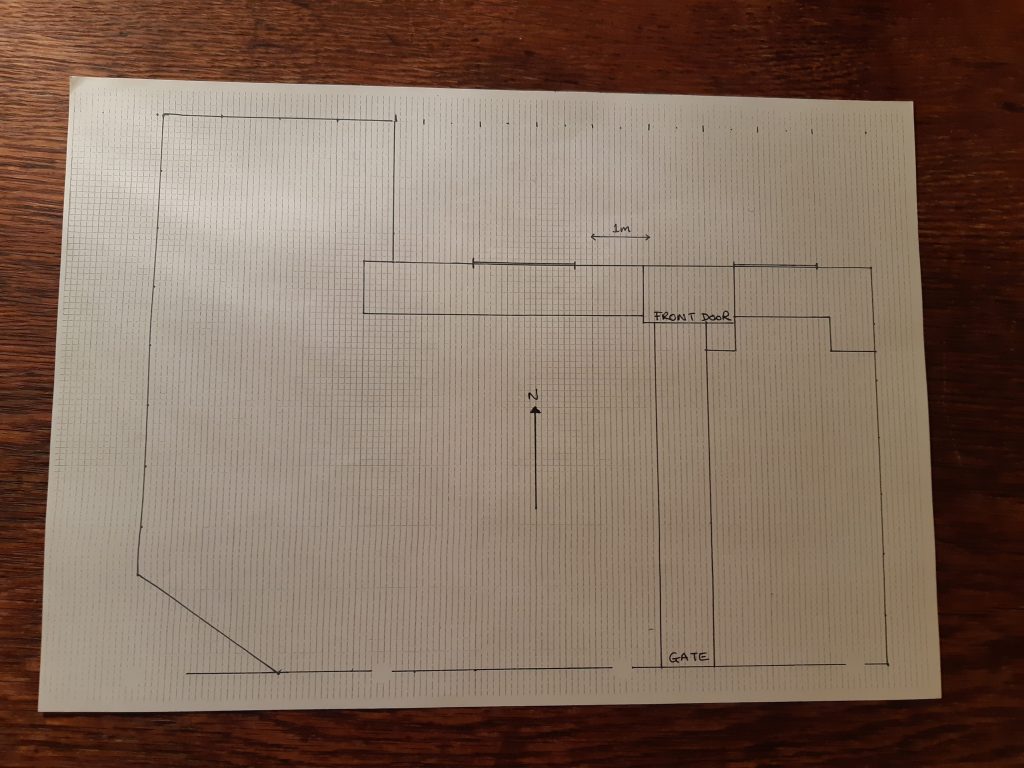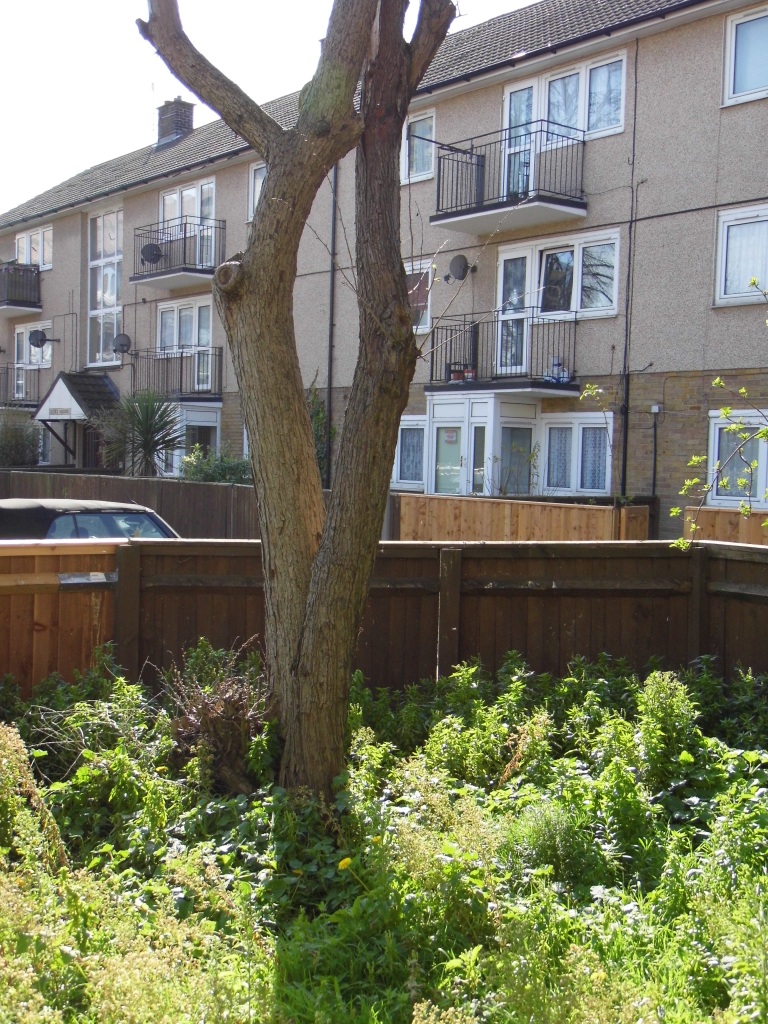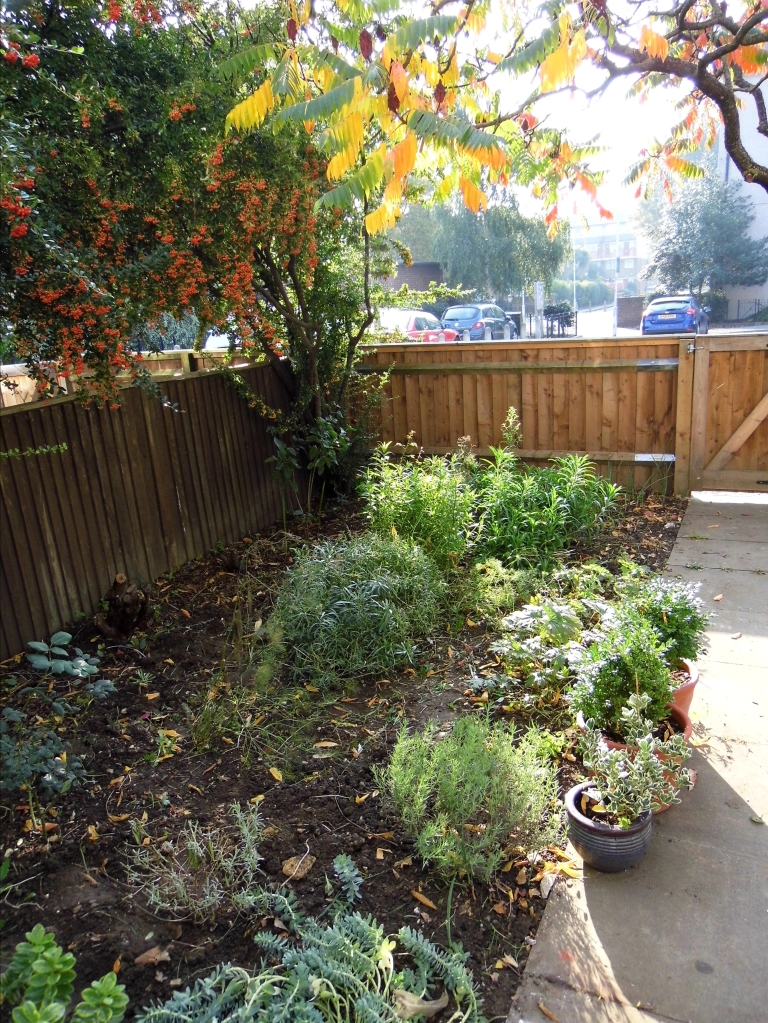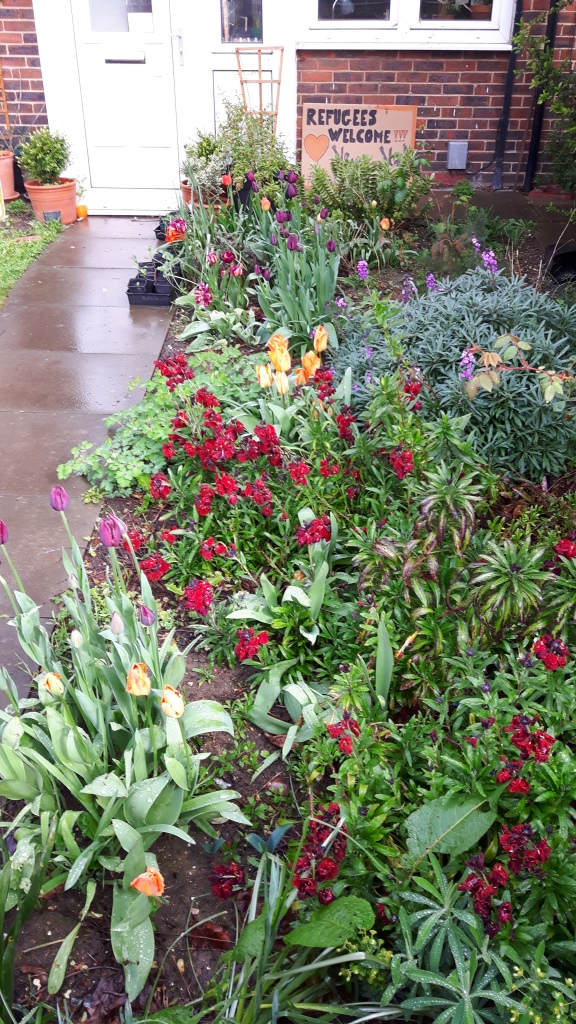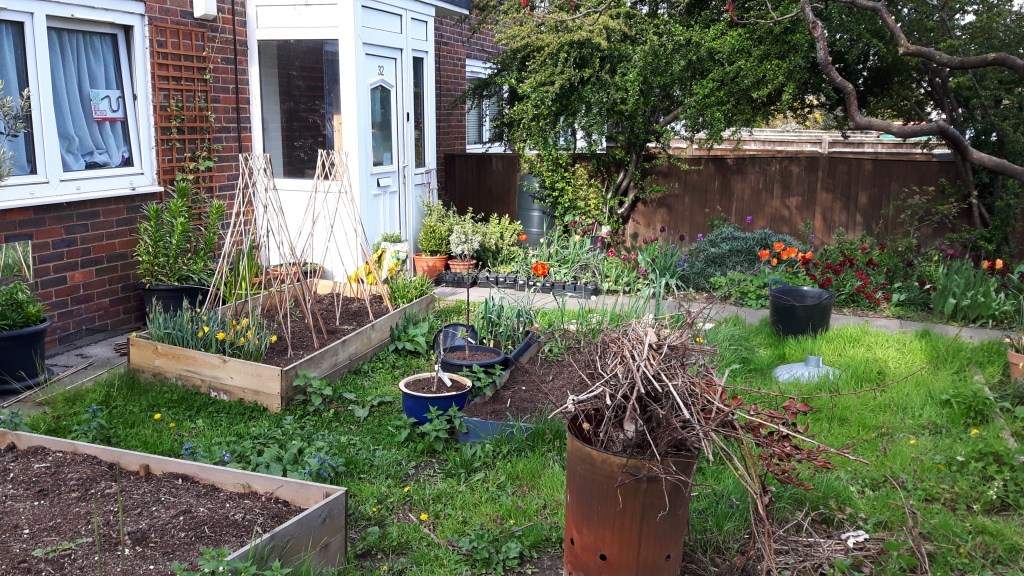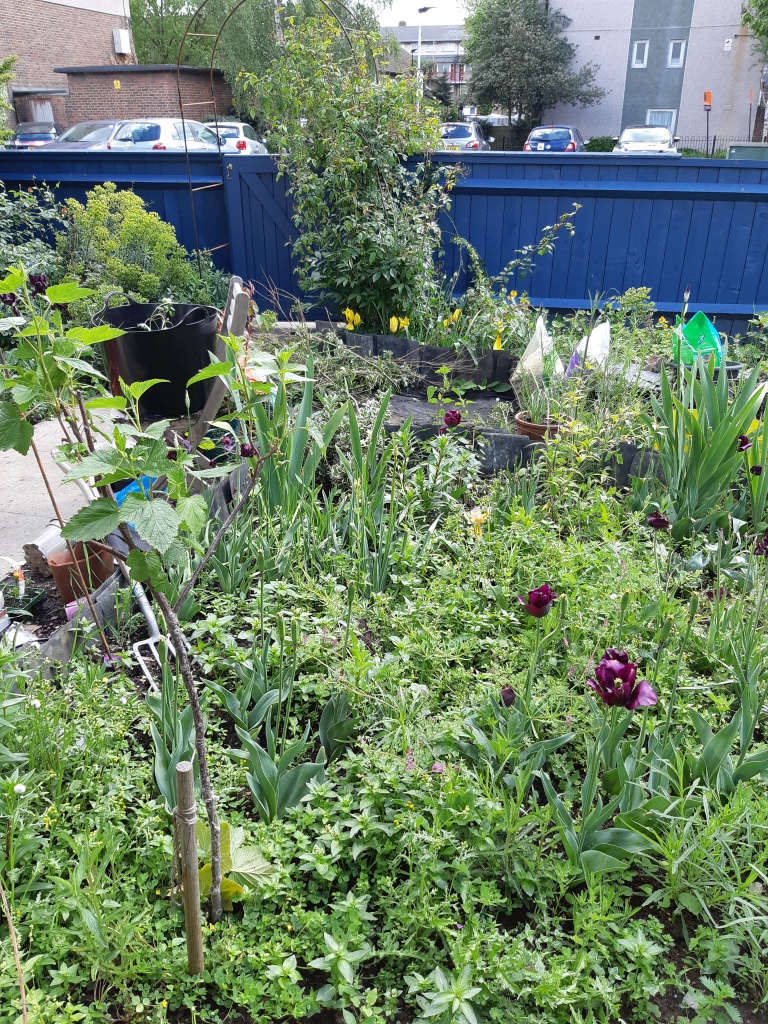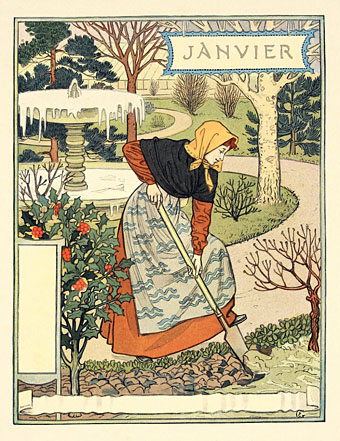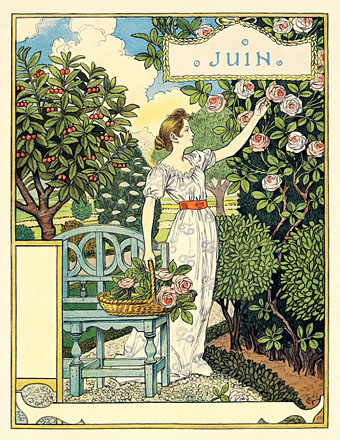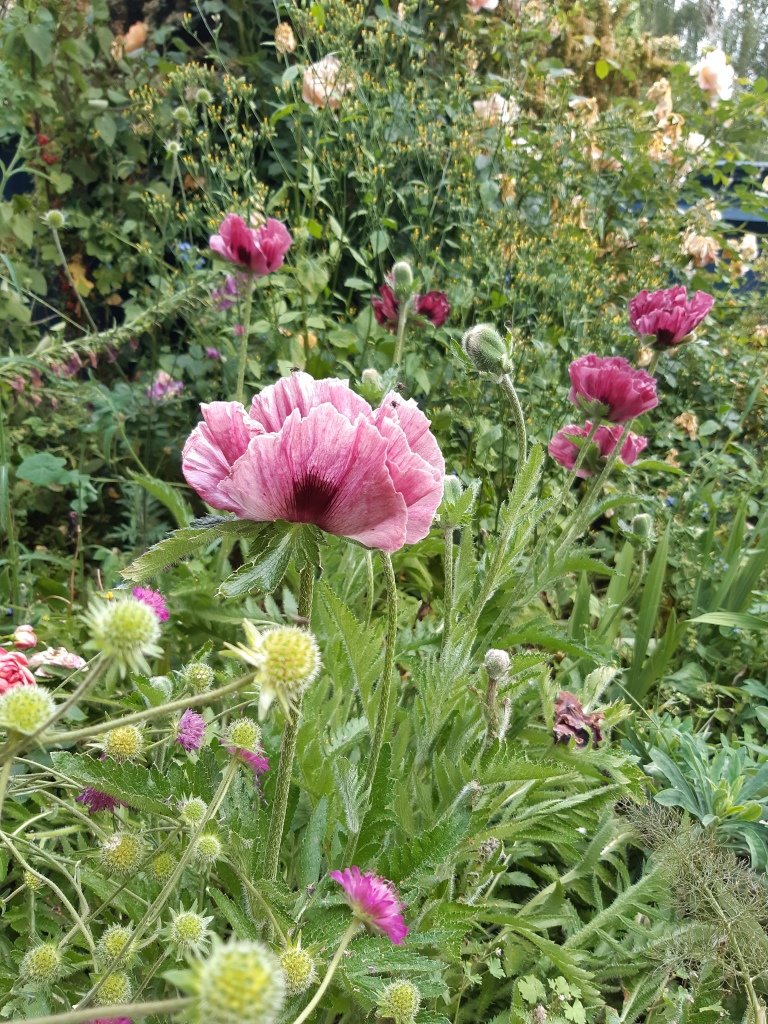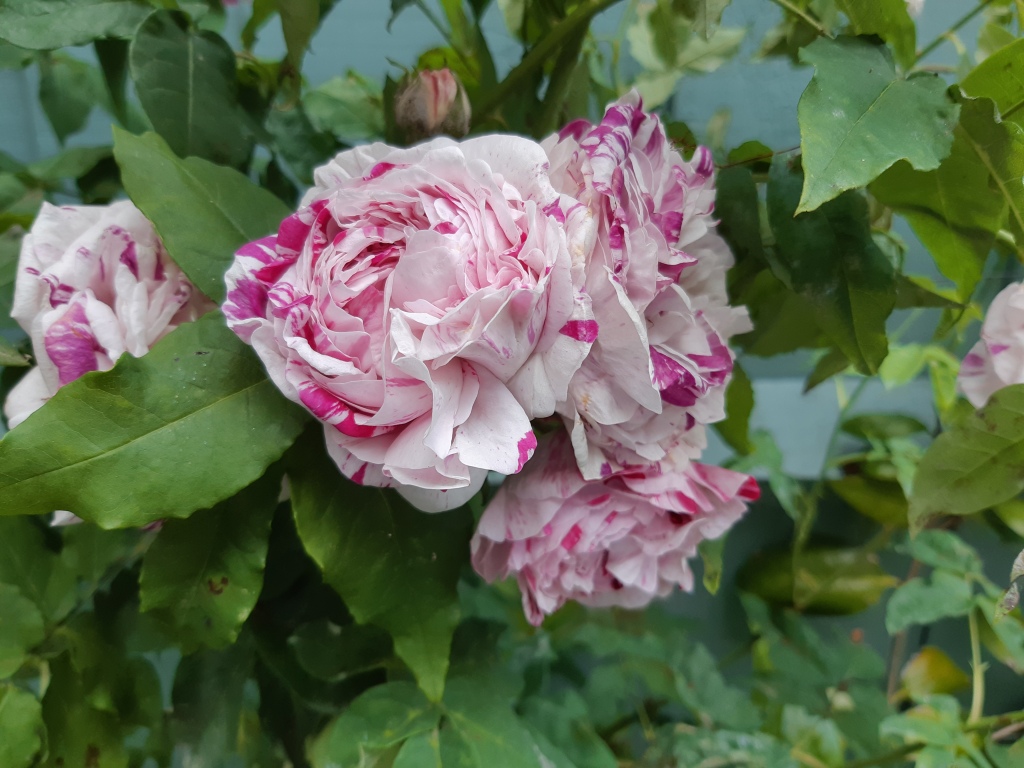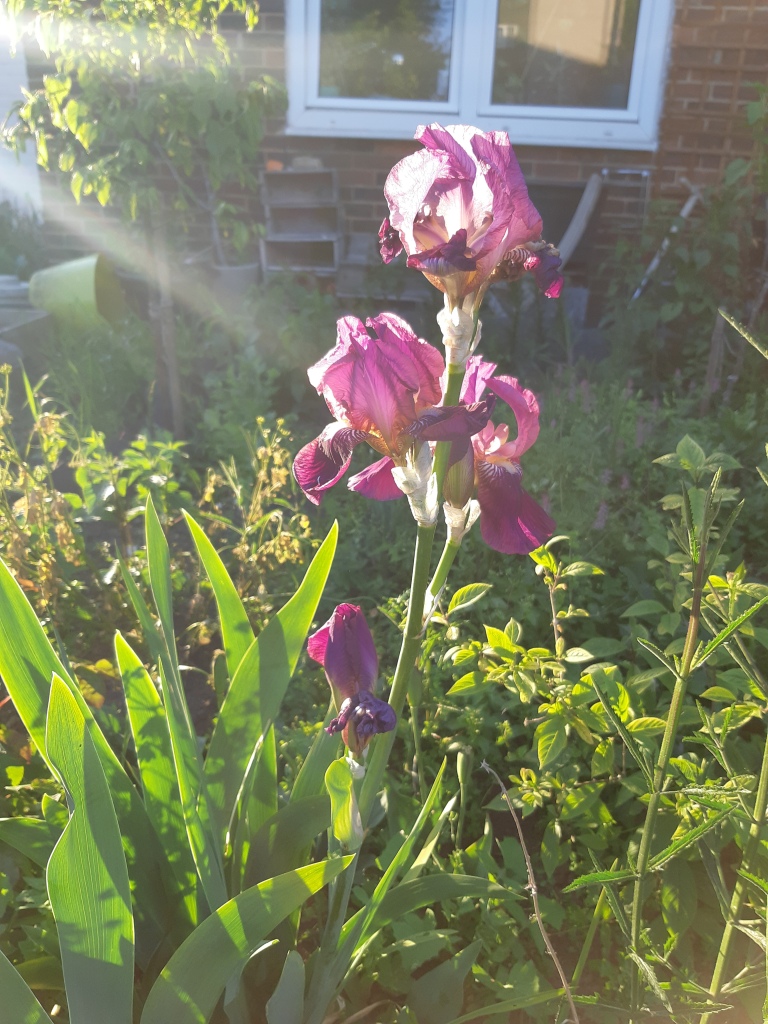

Hold on, hold on, don’t go too fast: all the gardening books warn against getting ahead of yourself in late winter. For me, the recommendations to stay inside and wait in the dark months are pointless; I’m almost always still planting bulbs. As true this year as any, ‘I’ve planted in February and they still usually come up!’ I reassured friends – reassuring myself as much as anyone. I was pleased to see Rachel de Thane posting in Instagram about planting bulbs in January.
But it’s true, they do usually still come up! If they’re stored outside, and kept dry and cool, they last longer than you might think. And it’s easy to tell a viable bulb from a dead one: it has the springy resistance of life, rather than being dried out, squishy with rot, or spongy with mould. Some, like tulips and narcissi, may well be sprouting. Some won’t come up, but most will – maybe a little short or a little later than you might expect, but still. And it’s nice to be in the garden in January: the early sunset constrains the time you have, but you can watch the quality of the light changing, from the thin, pale gold sunlight of late December and early January, to the richer, deeper light that heralds the spring. The low sun makes the best shadows, and catches the first new growth, illuminating it into glowing peridot jewels.


I sometimes think that gardening is actually the best way to make the winter months go quickly: sometimes it feels as though there isn’t time to do any of the things that need to be done before the growing season gets underway. This year, buds were breaking by mid-February (global warming, or just fool’s spring?) and by the time I got round to pruning the Lady of Shalott rose it was already feathered with the soft, copper-green early leaves. But I couldn’t leave it another year: there was too much dead wood underneath, and the upper part would be hopelessly tangled if I didn’t cut some of the live branches out. I didn’t prune it last year at all apart from a vigorous dead head in late summer, and I didn’t cut it hard this year, but I’ve thinned it out and cut out all the dead wood, and that will hopefully encourage more flowers.
The other thing I found myself desperately having to do at the last minute was the winter wash of the damson and plum trees, and that I did at a very bad time – just before a long rain shower. Since I planted it the damson tree has suffered badly from leaf curl, and although I tried to deal with it gently (I bought ladybirds online) last year the plum leaf curl aphids infuriatingly spread from the damson to the plum. The winter wash I tried is apparently organic, but directions said to spray on a dry day, so I have no idea if heavy rainfall four hours after spraying will stop it doing what it’s supposed to. I didn’t manage to find the time earlier in the year (I was either busy or it was actually raining) but you have to do it before the buds break. Well, I tried, and if it doesn’t work I’ll try again next year, or resign myself to not getting fruit from either tree. But I want damsons! I adore that mouth-crinkling sourness (all my favourite fruits are tart: blackcurrants, gooseberries, rhubarb) and it’s infuriating to never have had more than a handful of fruit. The plum, a Victoria, has never fruited yet, but I live in hope.
The only seeds I sowed in February were cerinthe. Like most gardeners I have to resist that strong temptation to sow early, but this year the mini-greenhouse and the cold frame are full of pelargoniums sheltering from the cold snaps that we had in December and January. I’m not going to move them on until we’re into March, at which point I can start seed sowing. (I vividly remember the heavy snow we had in late February in 2018: I had to get up at 5am to get to a picket line in Essex, and six inches of snow had fallen overnight. A salutary reminder not to count on mild weather until at least mid-March.)




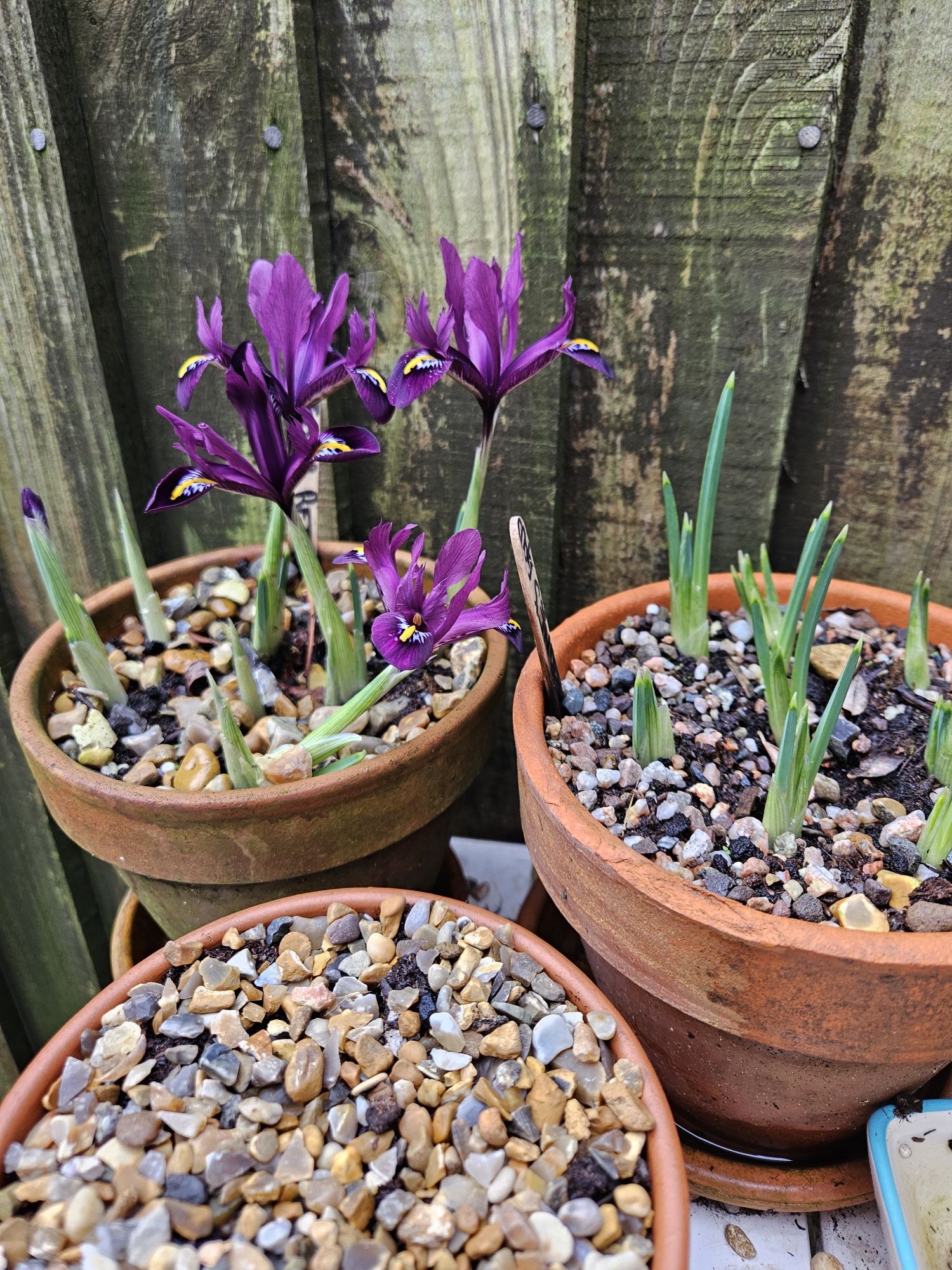
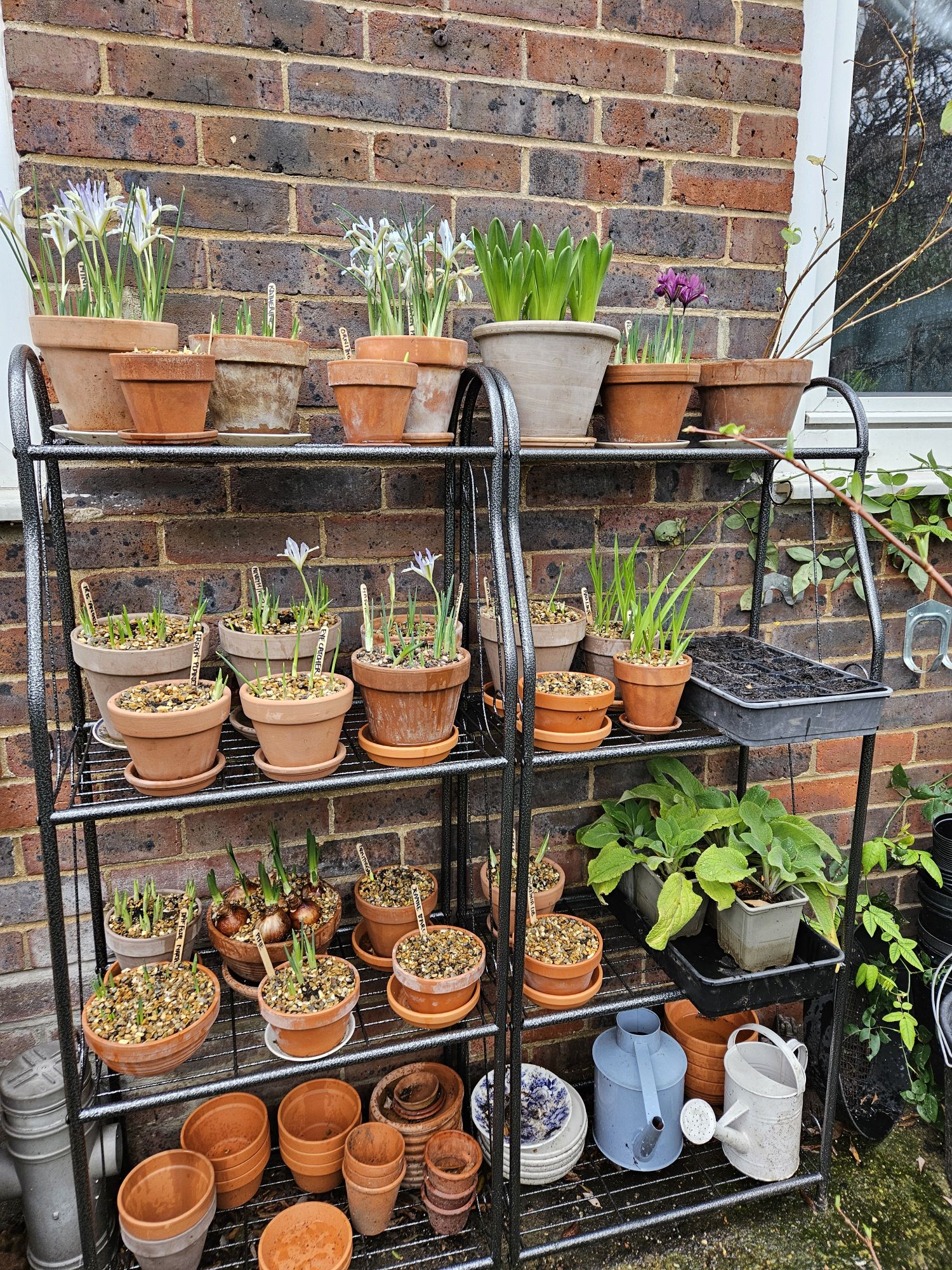


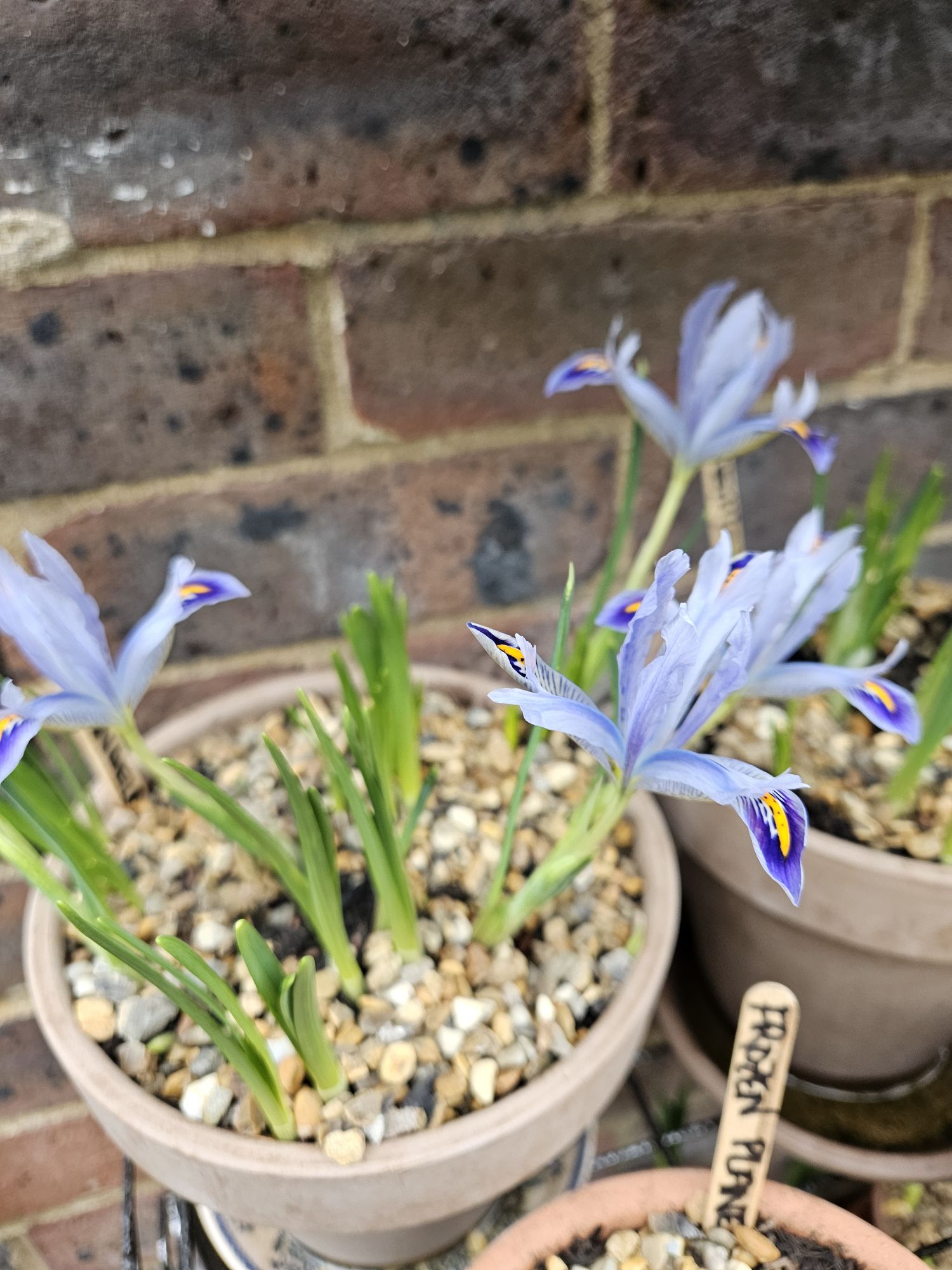


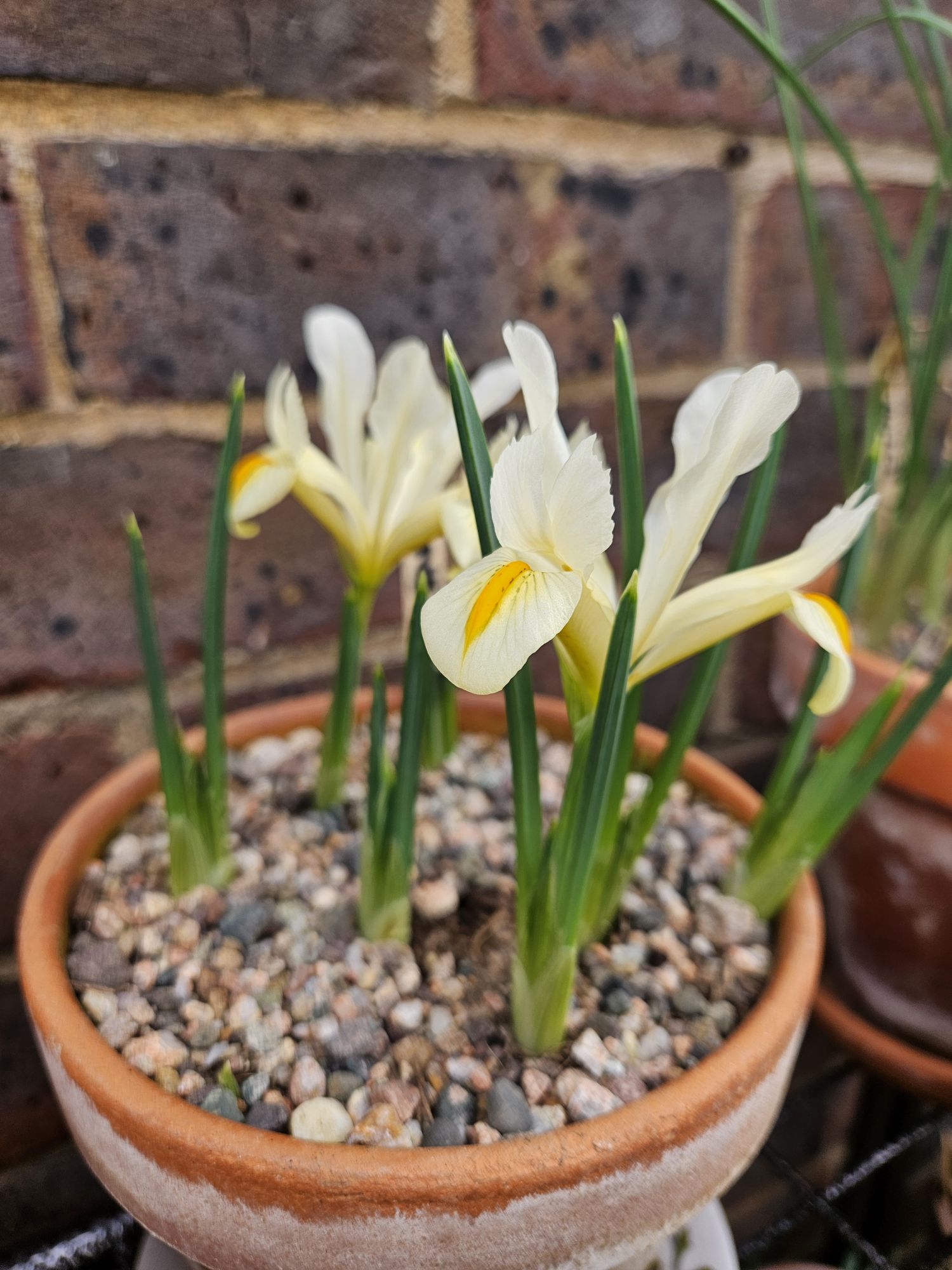
Meanwhile, the iris reticulata are doing just what I intended them to do. For some reason I found I’d ordered a massive range of different miniature irises, so they’ve mostly gone into pots in a display against the back wall. The first few are in flower: Frozen Planet, Pauline, Rejoice, When they go over they’ll be planted into the open ground and be replaced with geraniums and begonias, but there are enough, alongside other small bulbs, that the display should keep going well into April.



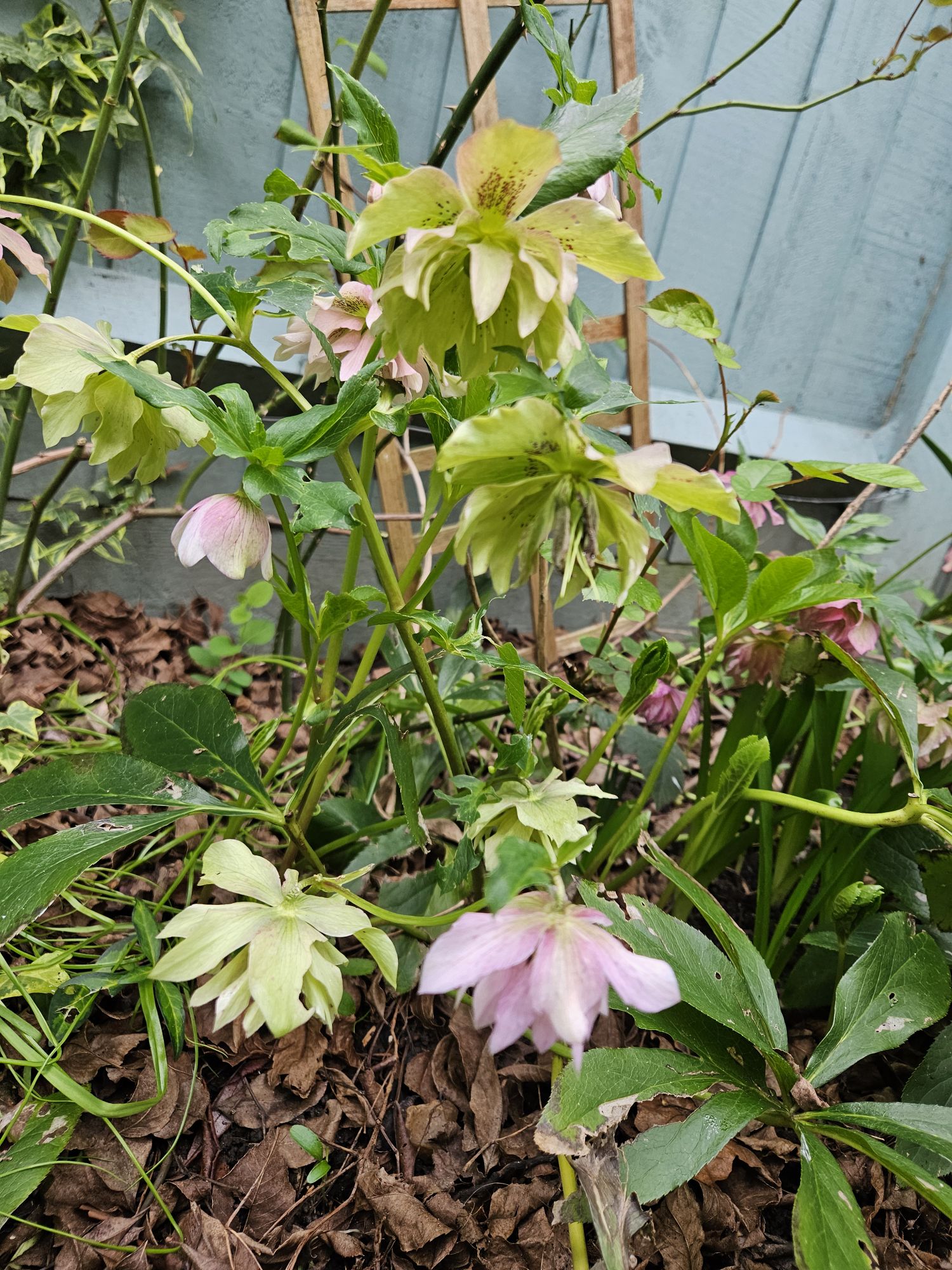
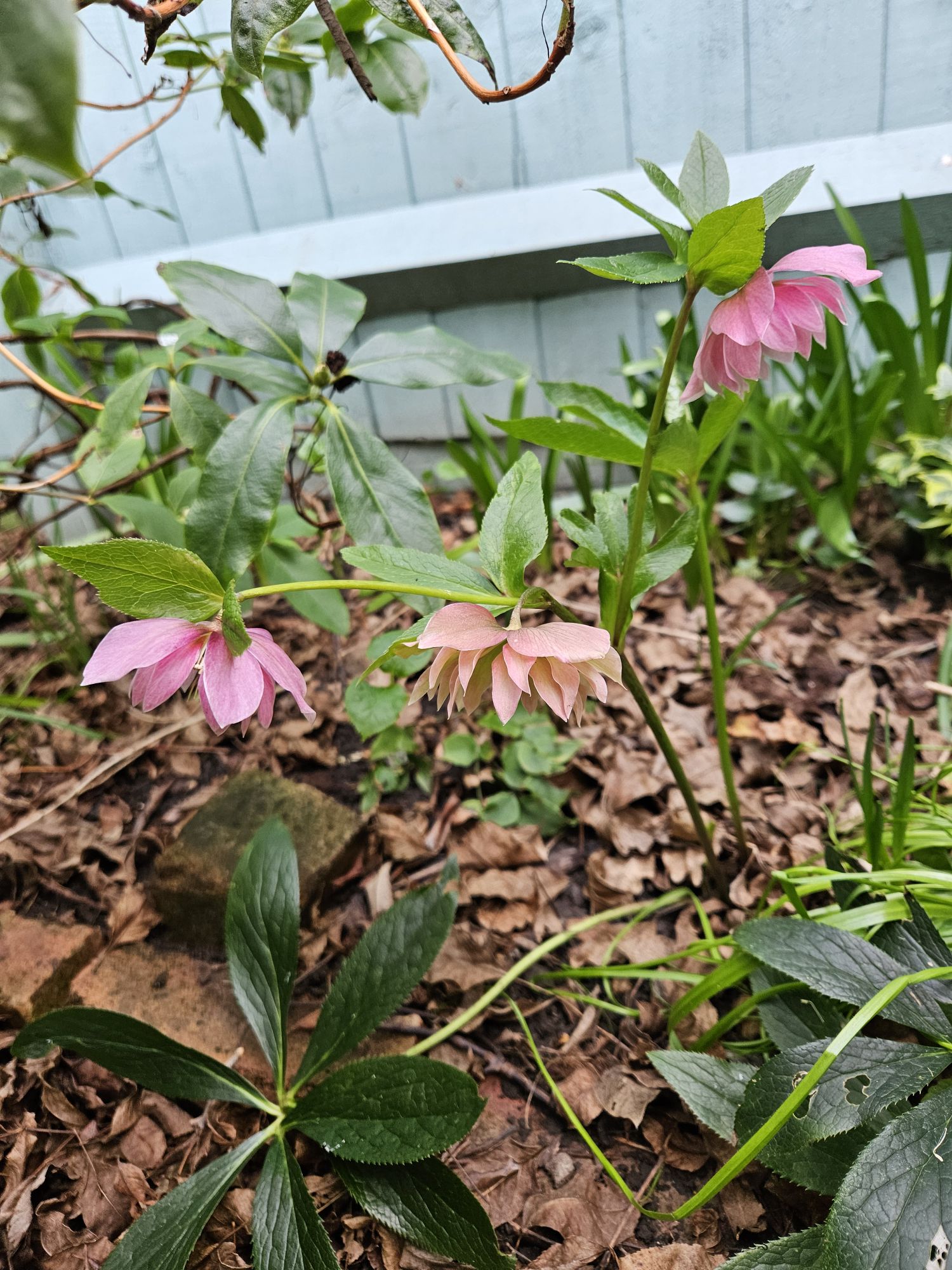
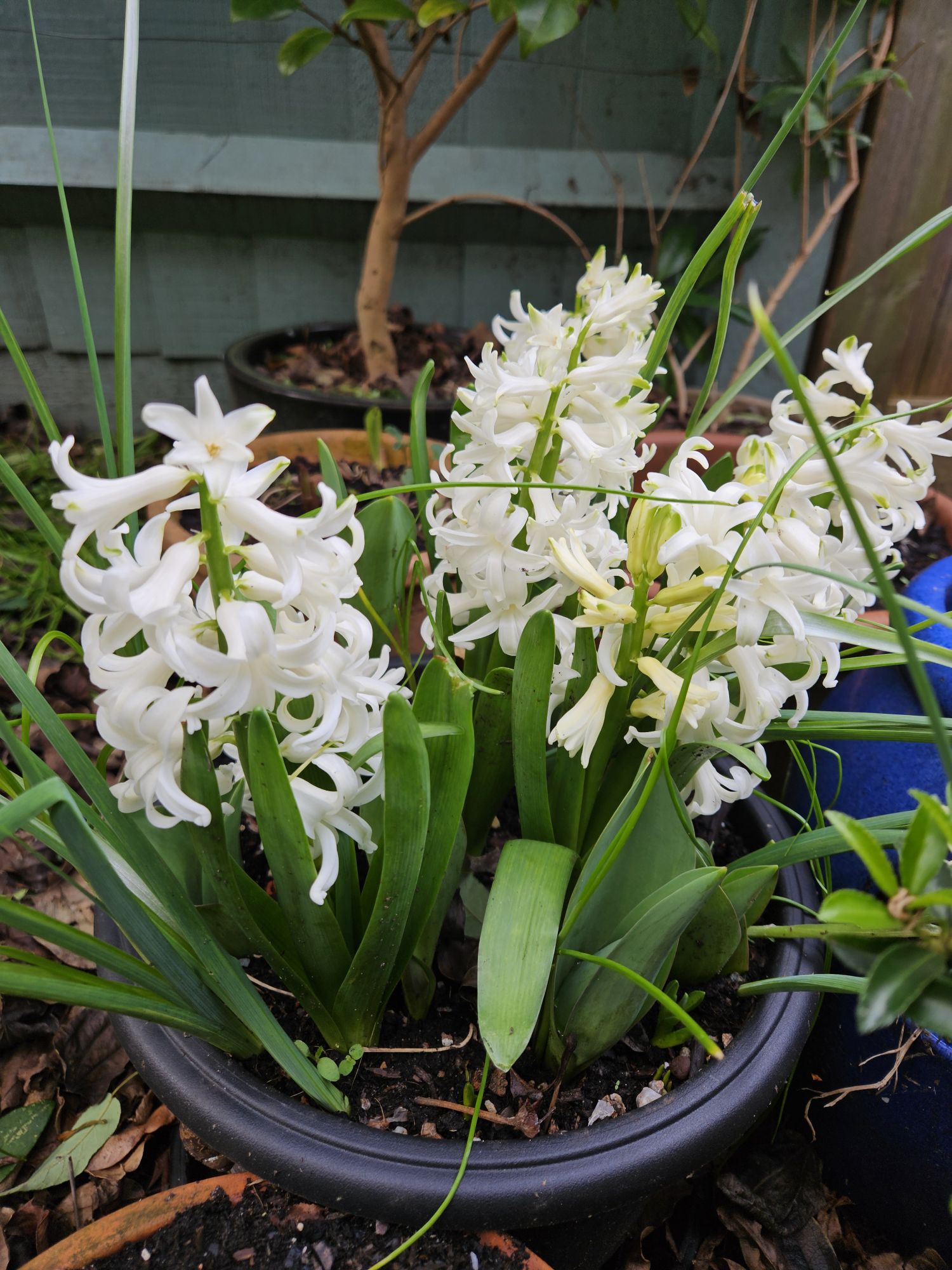

Other things that are out: the first few daffodils, and the tete-a-tete narcissi; the deep purple ‘Woodstock’ hyacinths in the planter at the front; the Winter Beauty clematis is covered with little waxy bells, and the winter honeysuckle is not only blooming but attracting bumblebees (is that good? I always feel happy when I see bees but that seems strangely early.) The white chaenomeles japonica ‘Nivalis’ has blossom, and the sarcococca confusa is in bloom with the most gorgeous, rich scent. The hellebores are better this year than perhaps they every have been. And everything seems to be coming into leaf – again, absurdly early. It’s beautiful, but disconcerting.

